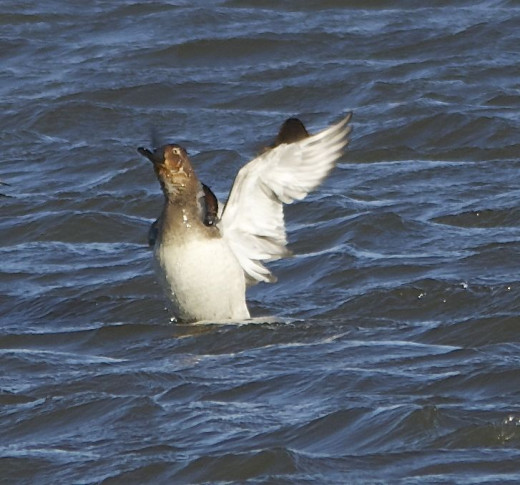Life at Boomer Lake with Deb, Sunday January 12, 2014

Field Notes
European Starlings Have Personality, Too
The European Starling is a non-indigenous pest to some, and to others, a breath of fresh air. Others bring the information, so you decide for yourself about which camp you will follow:
- Buddy the talking starling - Story - Campbell Live - TV Shows - 3 News
Debbie Bingham nearly left Buddy the bird for dead when she found him on a farm track, near Waimate, but now he is a talking point of Timaru.

Red-necked Phalarope Makes Outstanding Journey to Europe
Red-necked Phalarope migrates 16,000 miles, longest for any European bird. To hear more about this record breaking, gender-bending bird, see more at:
- Gender-Bending Bird Breaks Migration Record : Discovery News
A bird known for its gender-bending ways has yet again surprised researchers by breaking Europe's bird migration record. Continue reading →
Bills vs. Beaks and Food
With all the different bills and beaks that birds have, what can they eat? Research was done on that topic just for you, and here is the answer, courtesy of

Twisted Fish Eats Birds
Birds eat fish, yes, but a fish that eats birds? A resounding YES! Learn more about the aggressive African tiger fish and our own monk fish.
- Fish snatches bird out of the air in mid-flight | Geekquinox - Yahoo News Canada
From the blog Geekquinox: There are plenty of birds who prey on fish, swooping down to pluck them from their watery home, but there's one fish who's getting back at these winged menaces. Apparently rumours have been going around for decades of the Af

The Arctic's Own: Trumpeter Swan
Here’s a mighty big piece of news for you. As far as I know, this is the first Trumpeter Swan to land on Boomer Lake, and I was lucky enough to record the event on Tuesday. This was a 12 degree F day, and I saw what appeared to be a swan coming in from the north around 8:30 a.m. When I returned from my walkabout, there was the swan closest to the west side of the lake. I made the attempt to get photos from the east side, but it just wasn’t working. For me to travel to the west side of the lake, especially on such a cold day, it has to be a matter of great importance. Even though I was shooting into the sun, this is not a bad picture, and it certainly shows the identity of this Arctic denizen. What a find!

Mallards with Some Potential Crosses
There were even better things in store. There were three breeds of ducks, in one picture, no less. We have the Mallard and Cayuga(domestic) cross, the American Wigeon and Cayuga cross, and the Mallard male. This picture will clearly show the differences between all of them. This was a day where there was only a very small water patch available during this exceptionally cold week.

American Wigeon
Here is the American Wigeon male, all by himself. He is a dabbling ducks, which is a duck that will upend in the water to feed. These birds will also feed on land. They are also known as the Baldpate, and ride high in the water. I consider this an exceptionally good photo of a very striking bird.


Great Blue Heron Winter Party
The Great Blue Herons have a rookery in the Northern Reaches, and that is seeing a good bit of activity. I saw half a dozen herons on the ice, some at home walking upon it, and others that were very unsure of their footing. I knew that you’d enjoy these shots as much as I enjoyed finding them.

Immature Black-crowned Night-Heron
The immature(or juvenile) Black-crowned Night-Heron was in the Southern Cove today, which is water once again, instead of sheer ice. He or she was wide awake first thing this morning. The heron was busily fishing a few feet from Great Blue Heron, and paid no attention to be. I got several shots of this wonderful young bird, which is characterized by red eyes. Another bird that is very similar, is the Yellow-crowned Night-Heron. I am pleased to say that I have seen both Night-Herons here in Stillwater.


Canvasbacks
The Canvasbacks also permitted some exceptional photographic shoots today. Both males and females were prevalent, and were also taking advantage of open water. These birds are very similar to the Redheads, which have a shorter, standard sized bill.
How Do I Find Boomer Lake?
There are also a few shots that I wanted to get, strictly for your enjoyment. I know that it has been a hard and cold winter for many people. I spent a little extra time out in the field this week, looking for more striking bird poses, as well as natural shots. May these bring a smile to your face, and meet with your approval.
My report now ends for the week. Keep your eyes to the ground, and your head in the clouds until next time. As a reminder, keep a watch for irruptive species that don’t generally come to your areas, and record the information for me. We will talk again soon, and stay warm.




© 2014 Deb Hirt






